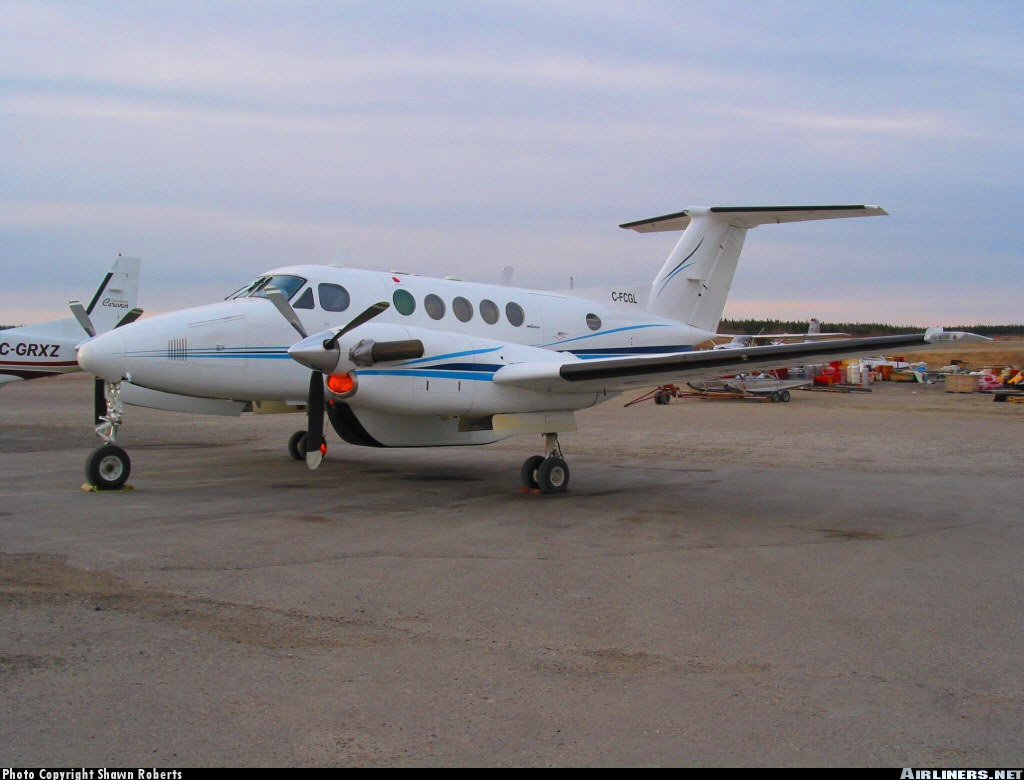Country
Crash of a Beechcraft 200 Super King Air in North Myrtle Beach: 6 killed
Date & Time:
Feb 3, 2006 at 2045 LT
Registration:
N266EB
Survivors:
No
Schedule:
Trenton - North Myrtle Beach
MSN:
BB-266
YOM:
1977
Crew on board:
1
Crew fatalities:
Pax on board:
5
Pax fatalities:
Other fatalities:
Total fatalities:
6
Aircraft flight hours:
8154
Circumstances:
The multi-engine airplane rolled inverted and dove into the ground on a landing approach. According to witnesses, the airplane made two approaches to runway 23. During the first approach the airplane was observed, "fish tailing" while about 30' feet over the runway. The airplane appeared to regain control and continued flying over the runway until passing the air traffic control tower, at which time the airplane began a climbing left turn. The witnesses stated that they heard the pilot tell the air traffic controller that he was doing a go-around. The controller asked the pilot if he had problems with the sea fog. The pilot responded back to the controller "no that his left engine kept power up a little too much and would not come back." The witnesses observed the airplane circle the airport to the left, and watched it line up on runway 23 for the second time. The witnesses stated that as the airplane descended to the runway and without any indication of trouble, the airplane "climbed and rolled left, went inverted and nosed down into the grass to the left of the runway and burst into flames." Examination of the airplane, airplane systems, engines, and propellers found no abnormal preimpact conditions that would have interfered with the normal operation of the airplane. No recorded radar data for the flight was located that captured the airplane's two attempted landings. Information contained in the Super King Air 200 Pilot's Operating Handbook (POH) and FAA Approved Flight Manual (AFM) showed the stall speed with gear extended, 40-degrees flaps, and zero bank angle as 84 knots Indicated Air Speed.
Probable cause:
The pilot's failure to maintain control during landing approach for undetermined reasons.
Final Report:

Crash of a Beechcraft 200 Super King Air in Kaduna: 2 killed
Date & Time:
Nov 28, 2005 at 1038 LT
Registration:
N73MW
Survivors:
No
Schedule:
Farnborough - Paris - Oued Isara - Kaduna - Abuja
MSN:
BB-22
YOM:
1975
Crew on board:
1
Crew fatalities:
Pax on board:
1
Pax fatalities:
Other fatalities:
Total fatalities:
2
Circumstances:
The crew took delivery of the aircraft in Farnborough and was supposed to transfer it in Abuja following fuel stop in Paris-Le Bourget, Oued Isara and Kaduna. Shortly after takeoff from Kaduna Airport runway 05, while in initial climb, one of the engine caught fire. The pilot-in-command lost control of the airplane that stalled and crashed, bursting into flames. Both occupants were killed.
Probable cause:
Engine fire/failure for unknown reasons.
Crash of a Beechcraft 200 Super King Air in Squamish: 2 killed
Date & Time:
Jul 28, 2005 at 0840 LT
Registration:
C-FCGL
Survivors:
No
Schedule:
Vancouver – Smithers
MSN:
BB-190
YOM:
1976
Flight number:
NT202
Crew on board:
2
Crew fatalities:
Pax on board:
0
Pax fatalities:
Other fatalities:
Total fatalities:
2
Captain / Total hours on type:
100.00
Copilot / Total hours on type:
80
Circumstances:
A Raytheon Beechcraft King Air 200 (registration C-FCGL, serial number BB190) operating as NTA202 (Northern Thunderbird Air), departed Vancouver, British Columbia, at 0824 Pacific daylight time on 28 July 2005 for a visual flight rules flight to Smithers, British Columbia, with a crew of two on board. The aircraft did not arrive at its destination, and a search was commenced later that same day. The aircraft was found on 30 July 2005. The crash site was in a narrow canyon at an elevation of about 3900 feet above sea level, in an area of steeply rising terrain. Both occupants were fatally injured. A post-crash fire destroyed most of the aircraft. The emergency locator transmitter was destroyed in the fire and no signal was detected. The crash occurred at about 0840 Pacific daylight time.
Probable cause:
Findings as to Causes and Contributing Factors:
1. The aircraft was flown up a narrow canyon into rapidly rising terrain for reasons that could not be determined. The aircraft’s proximity to terrain and the narrowness of the canyon precluded a turn, and the aircraft’s climb rate was insufficient to clear the rising terrain.
2. The pilot decision-making training received by the crew members was ineffective because they were unprepared for the unique hazards and special operating techniques associated with flying low in mountainous terrain.
Finding as to Risk:
1. The company operations manual (COM) gave no guidance to the crew for the operation of a visual flight rules (VFR) flight, except for the provision that it should not be conducted closer to obstacles than 500 feet vertically and horizontally.
1. The aircraft was flown up a narrow canyon into rapidly rising terrain for reasons that could not be determined. The aircraft’s proximity to terrain and the narrowness of the canyon precluded a turn, and the aircraft’s climb rate was insufficient to clear the rising terrain.
2. The pilot decision-making training received by the crew members was ineffective because they were unprepared for the unique hazards and special operating techniques associated with flying low in mountainous terrain.
Finding as to Risk:
1. The company operations manual (COM) gave no guidance to the crew for the operation of a visual flight rules (VFR) flight, except for the provision that it should not be conducted closer to obstacles than 500 feet vertically and horizontally.
Final Report:




